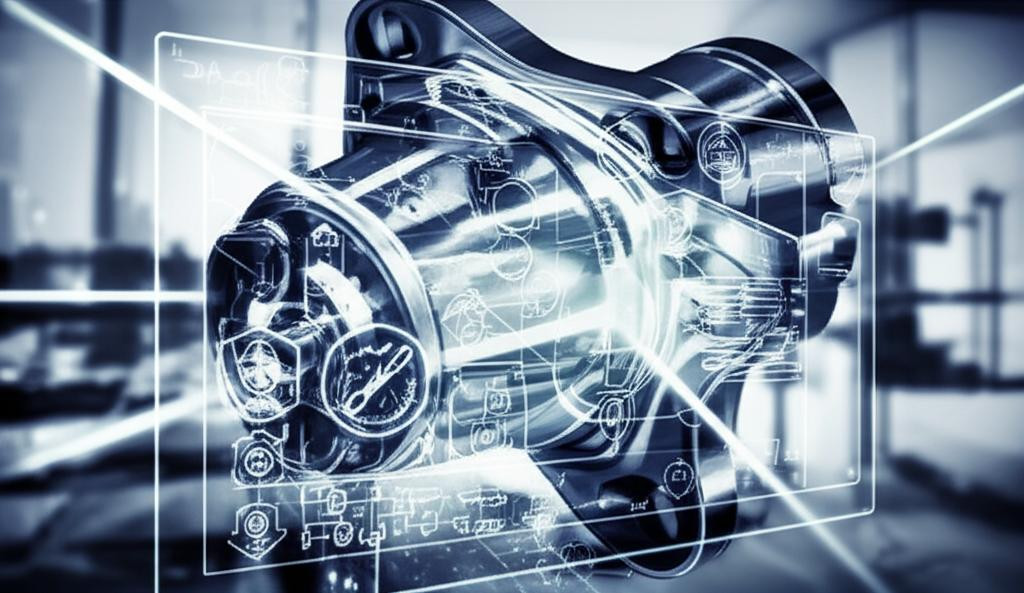The aerospace industry stands at the precipice of a manufacturing revolution, driven significantly by additive manufacturing (AM), commonly known as 3D printing. This technology promises unparalleled design freedom, lightweight structures, and optimized performance, but its integration into aircraft components is not without hurdles. Paramount among these is the rigorous process of aerospace additive manufacturing certification, a complex journey through the regulatory landscapes governed primarily by the Federal Aviation Administration (FAA) in the United States and the European Union Aviation Safety Agency (EASA) in Europe. Achieving FAA approval 3D printing and ensuring EASA 3D printed parts meet stringent safety and performance standards requires deep understanding and meticulous execution.
The unique challenges of additive manufacturing in aerospace
Unlike traditional subtractive manufacturing, AM builds parts layer by layer, introducing unique variables that demand a re-evaluation of established certification paradigms. The inherent complexities arise from process variability, material properties, and the need for robust validation methods. This necessitates a shift in focus from qualifying a final part to qualifying the entire manufacturing process, from raw material to post-processing.
Material and process qualification
A cornerstone of aerospace regulatory compliance for AM parts is the exhaustive qualification of both the material and the manufacturing process. This involves extensive testing to characterize mechanical properties (tensile strength, fatigue, creep), microstructural integrity, and consistency across builds. Parameters like powder quality, laser power, layer thickness, and build orientation significantly influence the final part's performance. Demonstrating repeatability and reproducibility of these properties is critical for part qualification.
Design and performance validation
The design freedom offered by AM allows for highly complex geometries, often leveraging topology optimization. However, validating the performance of such intricate designs, especially under extreme aerospace operating conditions, presents its own set of challenges. Non-destructive testing (NDT) methods must be adapted or developed to reliably inspect internal structures for defects that could compromise safety. Computational modeling and simulation play a crucial role, but physical testing remains indispensable.
The FAA's approach to AM part certification is largely performance-based, emphasizing that the manufacturer must demonstrate that the part meets all applicable airworthiness requirements. While specific regulations for AM are still evolving, the existing framework is applied, with guidance documents providing clarity. Advisory Circular (AC) 20-330, "Guidance for the Qualification of Additive Manufacturing Processes, Materials, and Parts for Aircraft Applications," serves as a key reference.
- Design Assurance: Manufacturers must establish a robust design assurance system that ensures the design of the AM part complies with all relevant airworthiness standards. This includes thorough documentation of design data, analysis, and testing.
- Process Control: Detailed process specifications, control plans, and validation activities are required to ensure the manufacturing process consistently produces parts meeting design intent. Statistical process control (SPC) and in-situ monitoring are often employed.
- Material Qualification: Comprehensive data on material properties, including variability, must be presented. This often involves a 'building block' approach, starting with coupon-level testing and progressing to sub-element and full-scale component testing.
- Data Package: A comprehensive data package, including all test results, analyses, process parameters, and quality control records, must be submitted for FAA review. This package forms the basis for demonstrating compliance and achieving FAA approval 3D printing.
EASA's approach to additive manufacturing certification
EASA shares many similarities with the FAA in its fundamental safety objectives but may differ in its procedural emphasis and specific guidance. EASA's regulatory framework also focuses on ensuring that AM parts meet airworthiness requirements, often referencing similar industry standards and best practices. EASA has published its own guidance material (e.g., EASA CM-AS-001, "Certification Memorandum – Additive Manufacturing") to clarify expectations for EASA 3D printed parts.
- Holistic Approach: EASA emphasizes a holistic approach, considering the entire lifecycle of the AM part, from design and manufacturing to in-service monitoring and repair.
- Organization Approval: Manufacturers typically need to hold appropriate EASA approvals (e.g., Production Organisation Approval, Design Organisation Approval) to develop and produce certified parts.
- Risk-Based Assessment: A strong emphasis is placed on risk assessment, identifying potential failure modes specific to AM and demonstrating how these risks are mitigated through design, process control, and validation.
- Traceability: Maintaining robust traceability throughout the entire supply chain, from raw material to finished part, is paramount for demonstrating compliance and managing potential issues.
Key considerations for aerospace regulatory compliance
Regardless of whether one is pursuing FAA or EASA certification, several overarching themes emerge as critical for success in aerospace additive manufacturing certification. These elements are fundamental to establishing confidence in AM parts for flight-critical applications.
- Data-Driven Decision Making: The sheer volume and quality of data required for material, process, and part qualification are immense. Robust data management systems are essential.
- Collaboration and Expertise: Engaging with regulatory authorities early in the development cycle, along with collaborating with material suppliers, equipment manufacturers, and testing houses, can streamline the certification process.
- Supply Chain Control: Ensuring the integrity and consistency of the entire AM supply chain, from powder metallurgy to post-processing and inspection, is vital for maintaining aerospace regulatory compliance.
- Continuous Improvement: The AM landscape is rapidly evolving. Manufacturers must establish systems for continuous monitoring, process improvement, and adaptation to new standards and technologies.
The path to certifying additively manufactured aerospace parts is undeniably challenging, requiring significant investment in research, development, and validation. Both the FAA and EASA are committed to ensuring the safety of flight, and their respective certification frameworks reflect this unwavering priority. Companies venturing into this space must be prepared for a thorough, data-intensive journey, where meticulous attention to detail and a proactive approach to part qualification are the keys to unlocking the full potential of 3D printing in the skies.


